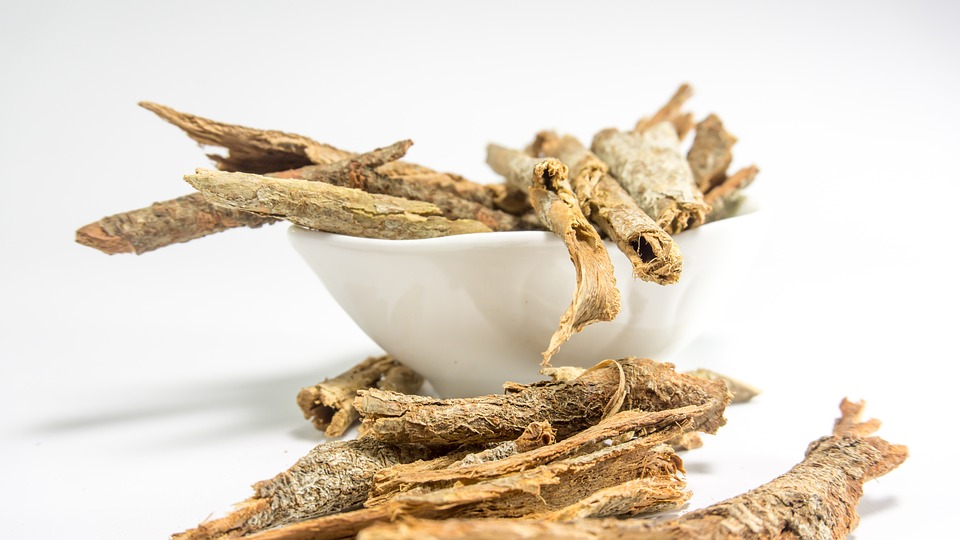The second printing of Eating Alive II has recently been published. Besides the new cover, a Foreword by actress Jennifer Beals, and the deletion of a few unimportant pages, we have made changes to some of the text.
Following is a copy of the major changes that have been made to replace pages 74 to 81 of the first printing of Eating Alive II. They include updated additions to the list of recommended proteins and fats, information about Glycemic Index and a relatively new concept called Glycemic Load, and an updated Food Chart that incorporates this new information.
REPLENISH
Your liver has hundreds of jobs to do, so it’s important that it functions effectively. Some of its jobs include the following.
• Neutralize toxins
• Deactivate hormones
• Activate vitamin D
• Make bile salts
• Oxidize fats for energy
• Store iron and vitamins A, D, and B12
• Change sugars and amino acids into fats such as
triglycerides
• Remove ammonia by the formation of urea
• Produce amino acids and plasma proteins
• Make CoQ10 and other nutrients crucial to your health
• And many, many more.
Healthy eating includes proteins, fats, and carbohydrates—all of which are required by your body to obtain the nutrients itneeds. Use the Food Chart on pages 78 and 79 as a guideline for choosing what to eat (see also the Menu Suggestions in Part II). The Food Chart is divided into three columns.
Left Column
The left column contains warming foods and consists of proteins and fats, which are usually found together in foods.
Animal proteins already have the proper sodium/potassium balance so they don’t need to be salted. The best choices of protein include: fish; skinless chicken and turkey breast; venison; ostrich; eggs (poached or soft-boiled); and whey protein powder (choose unsweetened varieties). Soy products such as tofu, tempeh, soybeans, and soy protein powder are healthy sources of protein but should be eaten in moderation. Compared to the other proteins listed, eggs and cheese have a higher fat content in proportion to protein. Whenever possible, choose egg whites, rather than whole eggs, and reduced-fat cheeses. Low-fat milk and plain yogurt are mixed protein-carbohydrate choices.
Certain fats are vital to a well-balanced, healthy diet because they provide essential fatty acids (EFAs)—omega 3 (O-3) and omega 6 (O-6) fatty acids—those that your body cannot synthesize itself.
The recommended choices for the fat portion of your diet include: Udo’s Choice Ultimate Oil Blend® (a combination of O-3 and O-6); hemp oil (O-3 and O-6); pumpkin seeds and pumpkin seed butter (O-3 and O-6); flax seed oil and flax seeds (O-3: the seeds should be ground—to release the oil—and be eaten immediately after doing so); tahini (sesame seed paste) and sesame oil (O-6); almonds and smooth almond butter (O-6); extra virgin olive oil (no EFAs but suitable for cooking); and sunflower and safflower oils (O-6).
Choose oils that are unrefined, minimally processed, and expeller pressed. These oils should be stored in dark containers that won’t allow light in and that have an expiry date on the bottle. They can be found in health food stores; they are more expensive than the processed oils found on the grocery store shelves, but they are worth the extra cost. Most oils (except olive oil and ghee) should be kept in the fridge. (For more information on healthy fats and oils, please see the article by Udo Erasmus in Part II.)
One of the best sources of healthy fat is fish, which contains two O-3 fatty acids called DHA (docosahexaenoic acid) and EPA (eicosapentaenoic acid). DHA is used in the nervous system as a building block—for brain cells, for example. EPA has broad-acting anti-inflammatory properties. The oilier fish have the most EPA. Ideal choices include wild salmon, albacore tuna, sardines, herring, and mackerel.
Right Column
The right column contains fruits (carbohydrates) that are cooling foods—those that are naturally high in potassium and/or sugar.
Centre Column
All the foods in the centre column are carbohydrates; they include non-starchy vegetables and starchy carbohydrates—grains, legumes (beans, peas, lentils, peanuts), and starchy vegetables such as potatoes and corn. These foods should be salted with Celtic sea salt before being eaten; they’re high in potassium, but when you add sea salt to them, the sodium in the sea salt combines with the potassium of the plants to make them neutral—neither warming or cooling.
Vegetables should be lightly steamed or stir-fried as often as possible, especially during cooler weather; this makes them easier to digest and helps avoid irritating a sensitive ileocecal valve. Cruciferous vegetables are those that belong to the cabbage family; they have anti-cancer properties and should be eaten several times a week.
You’ll notice on the Food Chart that the starchy carbohydrates, fruits, and dairy products have two letter values beside them—for example, L/L. The first letter represents the Glycemic Index or GI of that particular food. A low value (L) denotes a GI of 55 or less; a medium value (M) means a GI of 56 to 69 inclusive; and a high value (H) denotes a GI of 70 or more. The second letter represents the Glycemic Load or GL rating of that particular food. A low value (L) denotes a GL of 10 or less; a medium value (M) means a GL of 11 to 19 inclusive; and a high value (H) denotes a GI of 20 or more. A few of the foods have ranges for one or both of these ratings, for example L to H. Read further for a more detailed explanation of GI and GL.
|
Value
|
Glycemic Index (GI) |
Glycemic Load (GL) |
|
Low (L) Medium (M) High (H)
|
55 or less 56 to 69 70 or more |
10 or less 11 to 19 20 or more |
The Glycemic Index or GI is a rating system that indicates how different carbohydrates affect the rise in blood sugar (glucose) levels. Carbohydrates are made up of sugars that are bound together. The digestive process breaks these bonds and the simple sugars then enter the bloodstream, affecting blood sugar levels and insulin production. Insulin is a hormone that is secreted by the pancreas in response to an increase in blood sugar levels shortly after meals. Insulin helps to regulate blood sugar levels.
Generally speaking, the more processed a food is, the higher its GI value. For example, fruit juices have higher GIs than their whole fruit counterparts, and flours (and foods made from them) have higher GIs than the whole grains from which they’re ground.
Foods that have a low GI enter the bloodstream slowly, cause a slow, moderate rise in blood sugar, and therefore a moderate insulin response. Foods that have a high GI enter the bloodstream quickly, cause a quick, sharp rise in blood sugar, and a corresponding sharp rise in insulin.
Excessive amounts of insulin in the bloodstream have the following effects.
• Insulin lowers blood sugar levels by promoting the uptake of glucose into most of your body’s cells, especially the muscles, liver, and fat cells. Excess insulin causes rapid absorption of glucose. As a result, blood sugar quickly falls below a critical level and your body calls out for more glucose, which the brain requires in order to function. Thus, you experience carbohydrate cravings and blood sugar swings.
• Insulin increases the use of glucose by most of your body’s cells, which automatically decreases the use of fat as an energy source.
• Insulin causes excess glucose in the liver to be converted into fats, which are then transported to fat cells to be stored.
• Insulin inhibits the action of lipase, the enzyme responsible for breaking down fat molecules.
In the GI rating system, glucose is assigned a GI of 100 and other foods are assigned GI numbers in comparison to it. In The Secrets to Great Health and in the first printing of this book, as well as in my clinical practice, we had only ever included the GI of carbohydrate-containing foods (GL values were not included). The values that were used were based on information contained in “International Tables of Glycemic Index” published in 1995 in the American Journal of Clinical Nutrition. We used the white bread index in which white bread was assigned a GI of 100. We’ve now chosen to switch to the glucose index in which glucose has a value of 100 so as to be less confusing to my patients and to readers, since most other publications use this method.
Another change that we’ve made is to assign more general ratings of Low, Medium, and High rather than actual numerical values, as we did in the past. We’ve chosen this method to make it easier to understand because for some foods, there’s a wide variation of numerical values.
One of the drawbacks of using only the GI is that it can be misleading because GI tests aren’t based on typical portion sizes of foods. Instead, researchers use a standard measure of 50 grams of carbohydrate of the foods that they are testing; therefore, portion sizes vary depending on the amount of available carbohydrate in the particular food. For example, a carrot contains only 4 to 6 grams of available carbohydrate so you’d need to eat about 10 carrots to consume 50 grams of carbohydrate—and nobody eats that many carrots at one meal! We found that many patients were avoiding carrots and other nutritious high-GI foods, such as beets and squash, because of their higher GI values. This is where the Glycemic Load or GL proves more useful.
GL is a relatively new tool that takes into account the GI as well as the amount of carbohydrate in a typical portion size of a given food. The GL is calculated by dividing the GI numerical value of that food by 100 and then multiplying by the grams of carbohydrate that a typical serving contains. As an example, in some studies, carrots have a high GI rating of 92. One medium carrot only has about 6 grams of available carbohydrate, so the GL would be 92 divided by 100 then multiplied by 6, giving a low GL rating of approximately 5. In contrast, white rice has a low GI of 51. A one-cup serving has 42 grams of available carbohydrate, so the GL would be 51 divided by 100 then multiplied by 42, giving a high GL rating of approximately 21.
Highly processed foods, starchy high-GI foods like white bread and white rice, and foods and beverages that contain a lot of sugar—such as cakes, cookies, candy, and soft drinks—generally have high GL values. These are lacking in nutrients and are not recommended foods of THE EATING ALIVE PROGRAM.
No GI/GL values are available for some of the grains such as spelt, amaranth, kamut, quinoa, and oat groats, but when cooked in their whole form, the glycemic values would generally be assumed to be in the low to medium range. ‘Whole form’ means the whole grain itself, not the flours or flakes made from them. (As an example, because they are more processed, rolled oats would have higher glycemic values than old-fashioned, large flake oats and oat groats would have even lower values.)
Non-starchy vegetables have no glycemic values because they contain either no carbohydrate or too small an amount of available carbohydrate for glycemic testing to be feasible. This may also explain why there are no GI/GL values for lemons, limes, nuts, avocadoes, and most of the berries, so we assume these values to be in the low range.
The best choices for carbohydrates are those that have low to medium or no GL ratings, as outlined below. These foods help to keep blood sugar levels stable and provide vitamins, minerals, phytonutrients, and fibre.
As a general guideline, fill half your plate with cruciferous and/or other non-starchy vegetables, particularly leafy greens. Feel free to load up on these foods at snacks as well as for meals.
One quarter of your plate can be filled with a serving of starchy carbohydrates that have low to medium GL values (a ½ cup serving is approximately equal to the size of a small clenched fist). They include the following:
• Lentils, chickpeas, and most beans—these also contain protein (½ cup)
• Oatmeal (slow-cooking type only, 1/3 to ½ cup)
• Whole grains such as oat groats, brown rice, barley, rye and wheat kernels, buckwheat, kamut, spelt, quinoa, and amaranth (1/3 to ½ cup)
• Whole-grain rye bread and other whole-grain breads (1 slice)
• Whole-grain pastas, and beanthread or mung bean noodles (½ cup)
• Starchy vegetables, such as corn, new potatoes, squash, carrots, beets, and sweet potatoes (½ cup).
Looking at the Food Chart, you’ll notice that most of these foods have low GL values. Those that have medium GL values are still nutritious—just don’t eat large quantities of them. The same goes for those foods that have medium or high GI values, but low GL values, such as carrots and beets. Carrots, squash, and sweet potatoes are foods that you want to include in your diet because they’re good sources of vitamin A and other nutrients; beets are an excellent source of anthocyanidins. So go ahead and eat them, just have them in moderate amounts along with other vegetables and some lean protein and/or healthy fat. Eating protein and fat with carbohydrates tends to slow down their rate of entry into the bloodstream, thus lowering their glycemic effect.
The remaining quarter of your plate can be filled with a serving of healthy protein (see Food Chart and page 69 for recommended choices). An average serving of animal protein, about 3 to 4 ounces, is approximately the same size as the palm of a woman’s hand or a deck of cards. Nuts, seeds, low-fat milk and yogurt, and legumes (beans, peas, lentils) also contain some protein.
Most fruits (excluding fruit juices, bananas, raisins, dried dates, and dried figs) also have low GL values. Fruits can be eaten for snacks, either by themselves or—for those whose digestive system can handle it—with low-fat plain yogurt, nut butters, or seed butters. A typical serving size is about ½ cup or a small piece of fruit. Choose fruit that’s “in season” for the climate in which you live and limit consumption to a maximum of one serving per day. Do not eat fruit with animal protein.
For those who’d like to lose weight, choose the majority of your carbohydrates from those that have no GI/GL values (such as cruciferous and other non-starchy vegetables) and those with low GL values. And remember that regular aerobic and strength-training exercises are also an important part of any weight-loss program.
In order to keep blood sugar levels stable, try to include some protein, carbohydrate, and fat at each meal and remember to have snacks. The amount of food needed on a daily basis will vary from person to person depending upon one’s size, activity level, and metabolism. Those with larger body frames and/or who are more active will require more protein than those who are smaller and/or more sedentary. Those who are very active will need to consume larger quantities of healthy carbohydrates. Glucose is stored in your body as glycogen. If intense muscle activity occurs—such as when you engage in heavy exercise for an hour or longer—you may deplete your glycogen stores. A high-carbohydrate diet will help to renew depleted glycogen within two days, while a high-protein, low- carbohydrate diet might take five days or longer to do so.
One of the problems with using glycemic values is that they don’t take into consideration the nutritive value of a particular food. For example, a small serving of low-fat ice cream has a low value for both GI and GL but it’s hardly nutritious; it’s usually loaded with sugar or sugar substitutes and provides little in the way of vitamins, minerals, antioxidants, and fibre. The GI/GL values are not the only criteria that you should use when choosing what to eat; instead, use them in conjunction with the other principles of THE EATING ALIVE PROGRAM. Remember to eat according to the climate in which you live; avoid foods to which you may be sensitive; watch your portion sizes; and eat balanced meals composed of the recommended carbohydrates, lean protein, and healthy fats.
The important thing to remember is to listen to your body; when you replace processed foods with nutritious, whole foods and improve your health, it becomes clearer as to what is good and bad for you.
For more information on GI and GL values, see the “Revised International Table of Glycemic Index and Glycemic Load Values-2002” at http://diabetes.about.com/library/mendosagi/ngilists.htm



